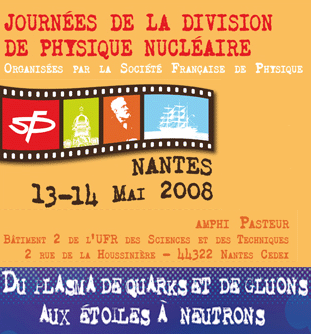Orateur
Anthea Francesca Fantina
(IPN Orsay)
Description
This PhD thesis sets itself in the framework of type II Supernovae theory. As a matter of fact, currently supernovae numerical simulations that simulates the supernova core collapse up to the formation of the shock wave fail to reproduce the observed explosion of the outer layer of massive stars. The reason for that could be due both to hydrodynamical phenomena such as rotation, convection, and general relativity, and to some microphysics processes involved in the picture and not yet completely understood.
Our aim is to investigate some of these microphysics aspects, namely the electro-weak processes, that play a crucial role during the gravitational collapse and to analyze their effects using the one dimensional code developed by Patrick Blottiau and Philip Mellor (CEA/DAM). The most important electro-weak process taking place during the collapse is the electron capture. It occurs both on free protons and on protons bounded in nuclei. This capture is essential to determine the evolution of the electron fraction of the core during the neutronization phase. It affects the efficiency of the bounce and, as a consequence, the strength of the shock wave.
More in details, electron capture rates in nuclei are modified by the effective mass of nucleons. This effective mass is induced by many-body correlations in the dense medium and depends on temperature, density, and isospin asymmetry. It could be deduced from theoretical models or extracted from experiments like in heavy-ion collisions. The symmetry energy of the nuclear mass formula also depends on the effective mass.
Introducing a temperature dependent effective mass into the supernova modelization, it has been found that the amount of the deleptonization is modified and it has a not negligible effect on the kinetic energy of the shock wave.

